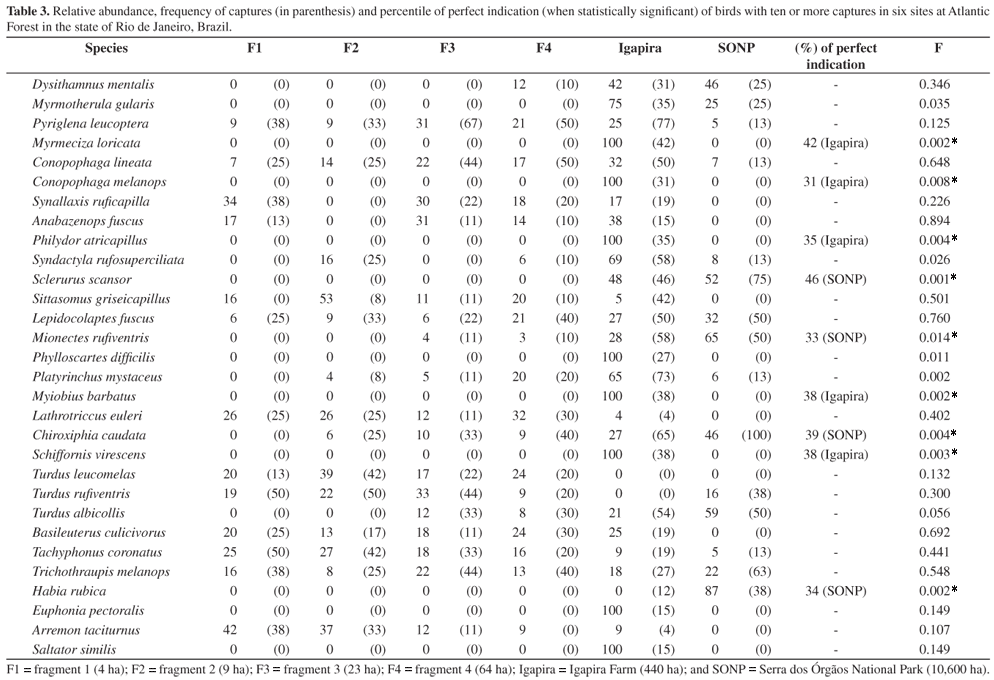Aiming to evaluate the potential of Passerine birds as bioindicators of forest fragmentation, we studied the avifauna in the mountain region of the state of Rio de Janeiro by mist-netting between 2001 and 2005. We sampled six sites, including four small fragments (from 4 to 64 ha) in an agricultural area (Teresópolis), one second-growth forest (440 ha - Miguel Pereira) and a continuous forest (10,600 ha, Serra dos Órgãos National Park - SONP). Indicator Species analysis and a Monte Carlo test were run to detect associations between species and sites, considering at least 30% of perfect indication and a significant value for the statistical test, only considering species with at least 10 captures. A total of 30 Passerine birds were sampled, and due to their association to the largest area (SONP), we considered Sclerurus scansor, Mionectes rufiventris, Chiroxiphia caudata and Habia rubica as the best indicators for this area. Five species were more captured not by chance in the 440 ha second-growth: Conopophaga melanops, Myiobius barbatus, Myrmeciza loricata, Philydor atricapillus and Schiffornis virescens and no species were related to any small fragment. This analysis has identified specialized Passerine species in many aspects (foraging substract, needs for nesting, rarity status), and it can be a valuable tool for detecting possible bioindicators.
Atlantic forest; bioindicators; birds; Brazil; indicator species analysis



